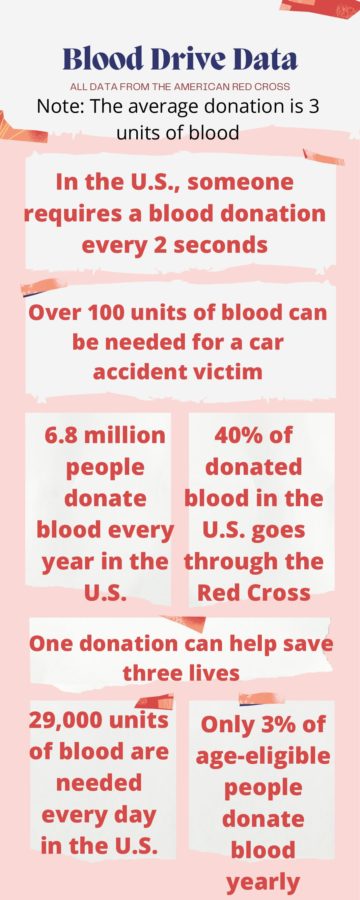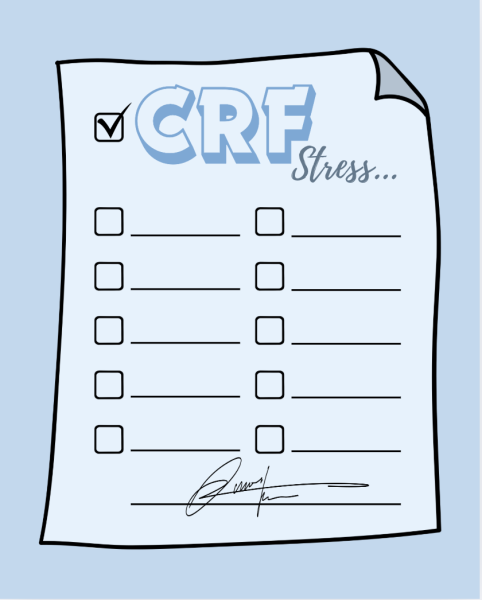How donating blood can help others in need
The Student Council Association blood drive is coming soon
The blood drive held by the Student Council Association (SCA) will happen on March 30 in the Little Theater, room 1020. To join, any student can pick up a form from room 4013. The drive has happened for more than seven years now, averaging around 100 donors from the school each year.
“This year we’re hoping to hit a record on how many students will donate,” senior Elissa Hall, SCA Co-President, said.
People have different blood types based on their genetics—either A, B, AB, or O, all of which can be positive or negative (there are other types, but they are very uncommon). Other than type O, which can be donated to any type, it’s important for blood types to line up in the right way. Type A cannot donate to Type B (and vice versa) and Type AB cannot donate to Type A or Type B. Negative types can donate to positive types, but positive types can’t donate to negative types. O negative is the “best” type for donation, because it can donate to anyone.
“The blood drive is a great way to learn your blood type if you don’t already know it, because they test at the beginning, and it’s free,” Hall said. “So you’re doing something right, and you get to find out your blood type. It’s like a two for one deal.”
You don’t need to know anything about blood types to donate. The main requirements to donate blood are being 16 years or older and at least 100 pounds. There are other requirements, such as low iron (which will be tested for) but age and weight are the main ones.
“Typically, you just sit down on the bed, and they’ll draw your blood and there’s a 15 minute waiting period afterwards where we’ll just make sure that everyone’s reacting okay, because there is the risk that people will not feel well afterwards,” senior Molly Wernicke, SCA Co-President, said. “So we’ll make sure that you’re okay. People get snacks and cookies afterwards, just to spike the blood sugar. Then we send you on your way.”
The transfusion can last 15-30 minutes for a normal transfer, or up to twice as long with double red blood cells (two units of red blood cells in one donation).
“It’s not pain, it’s more discomfort,” Hall said.
“I would encourage people, especially if you have the rare blood types, to do it, because we are definitely in a blood shortage in the U.S.,” said senior donator Savvy Thompson.
“One of the statistics that the Red Cross gives us is that one donation can help save three lives,” Wernicke said. “At least for me, it puts in perspective how important it is to donate blood. This will be my first year where I actually can donate, which I’m super excited about.”













